The Best Science Books To Read For Summer 2019
34:14 minutes
They say a vacation is only as good as the book you bring with you. And these days it feels like there are as many ways to consume science writing as there are fields of science. Whether you’re a fan of historical nonfiction, graphic novels, poetry or short essays, this year’s panel of summer science books experts has the one you’re looking for to take with you on your journey.
Alison Gilchrist is a graduate student researcher at CU Boulder and host of the podcast Buff Talk Science, and editor in chief of Science Buffs. Caren Cooper is an associate professor of public science at NC State University and author of Citizen Science: How Ordinary People Are Changing the Face of Discovery. Stephanie Sendaula is associate editor for Library Journal Reviews. They join Ira to talk about what they have chosen for their best summer science reads.
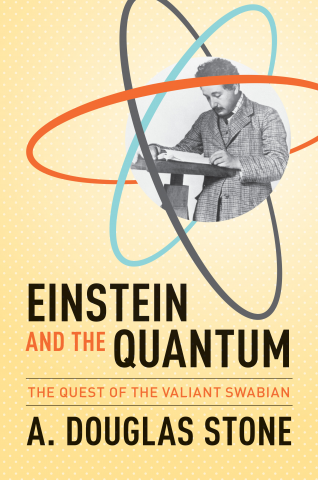 Einstein and the Quantum:
Einstein and the Quantum:Had a tough time picking my favorite book for this year. Because I am so fascinated by them—and they run in my family, my brother is a bee keeper—I was really drawn to Tom Seeley’s The Lives of Bees. His IS the bee keeper’s bee keeper. And being the geek that I am, Did You Just Eat That? spoke to my soul of nerdiness, posing and answering I-always-wanted-to-know questions like “Am I spraying germs everywhere when I blow on my birthday cake?” But, this being the 100th anniversary of the solar eclipse that made Einstein famous, I have to choose Einstein And The Quantum, by A. Douglas Stone as my top choice. I know, I recommended it last year, but it is a gift that keeps on giving. Because I love the history of science, I find this book engrossing: how all the famous people who shared the stage with Einstein, those who crossed his path, and those who became important footnotes, are weaved into a “I didn’t know that” tale. So, that’s my top pick. But: Still check out the others for an eclectic summer reading list.
Host of the podcast Buff Talk Science and editor in chief of Science Buff blog.
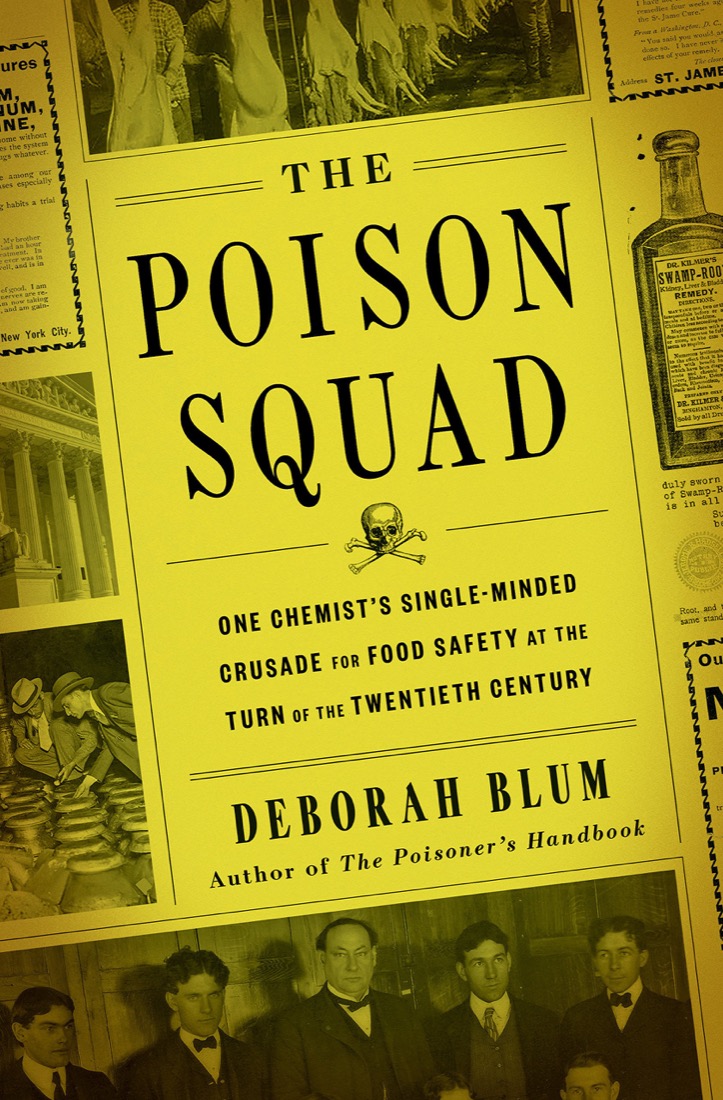 The Poison Squad: One Chemist’s Single-Minded Crusade for Food Safety at the Turn of the Twentieth Century by Deborah Blum
The Poison Squad: One Chemist’s Single-Minded Crusade for Food Safety at the Turn of the Twentieth Century by Deborah BlumThis is a historical retelling of how the FDA came to be, and how we demanded that ingredients labels be put on our foods. Like Blum says in the book, we tend to romanticize historical foods or “old-fashioned” foods, but they could be pretty gross. Dairy producers used to put formaldehyde in milk to preserve it! Not only was there “embalmed milk,” there was also “embalmed meat” and a long list of other disgusting and dangerous foods for sale before a couple scientists and politicians, and eventually the people, demanded regulations. Since the conversation about how much regulation is too much regulation is ongoing, I thought this book was an excellent reminder about what we take for granted: safe food!
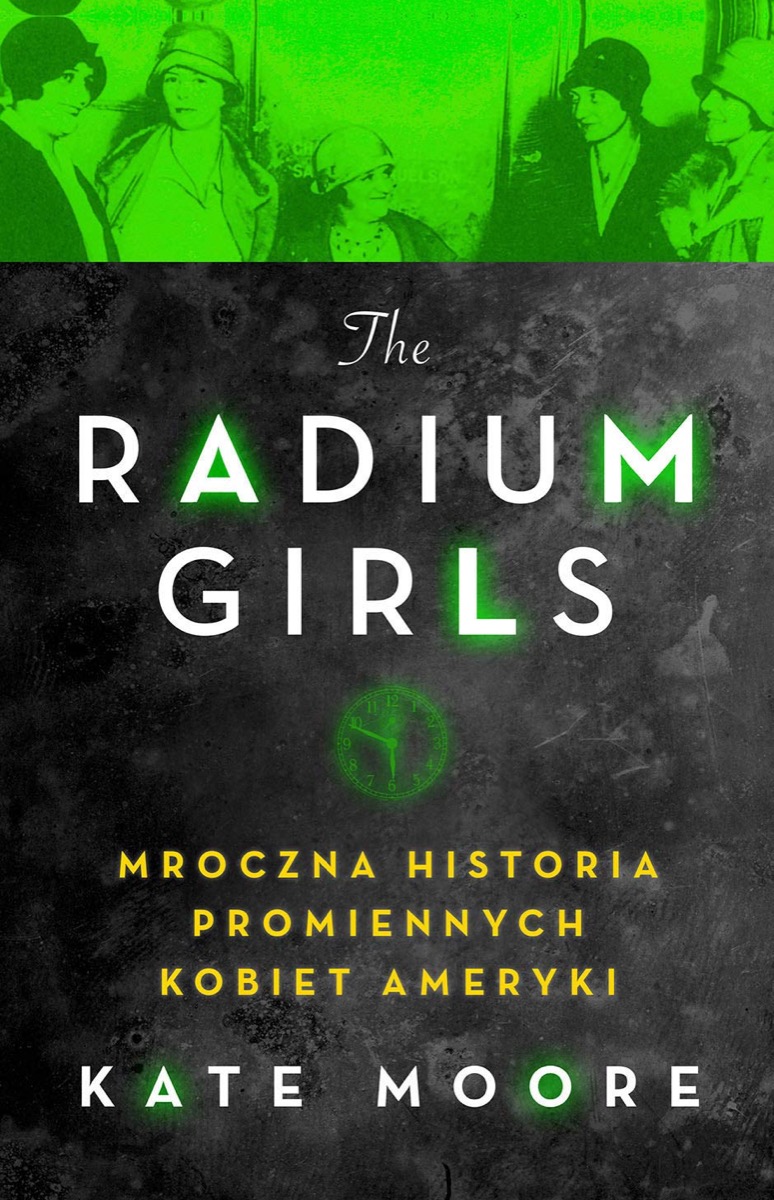 The Radium Girls: The Dark Story of America’s Shining Women by Kate Moore
The Radium Girls: The Dark Story of America’s Shining Women by Kate MooreAnother account of historical science—this one is about how we discovered and worked with radioactive materials before we knew how dangerous they were. It’s the story of the women working in radium dial factories (painting watches so that they glowed in the dark), who would end up suffering horrible side effects from radium poisoning. Warning: This one includes a bit of body horror—radium poisoning isn’t pretty. It was illuminating (ha) but very sad to read about how hard the radium factories fought to let women keep poisoning themselves so that they could turn a profit.
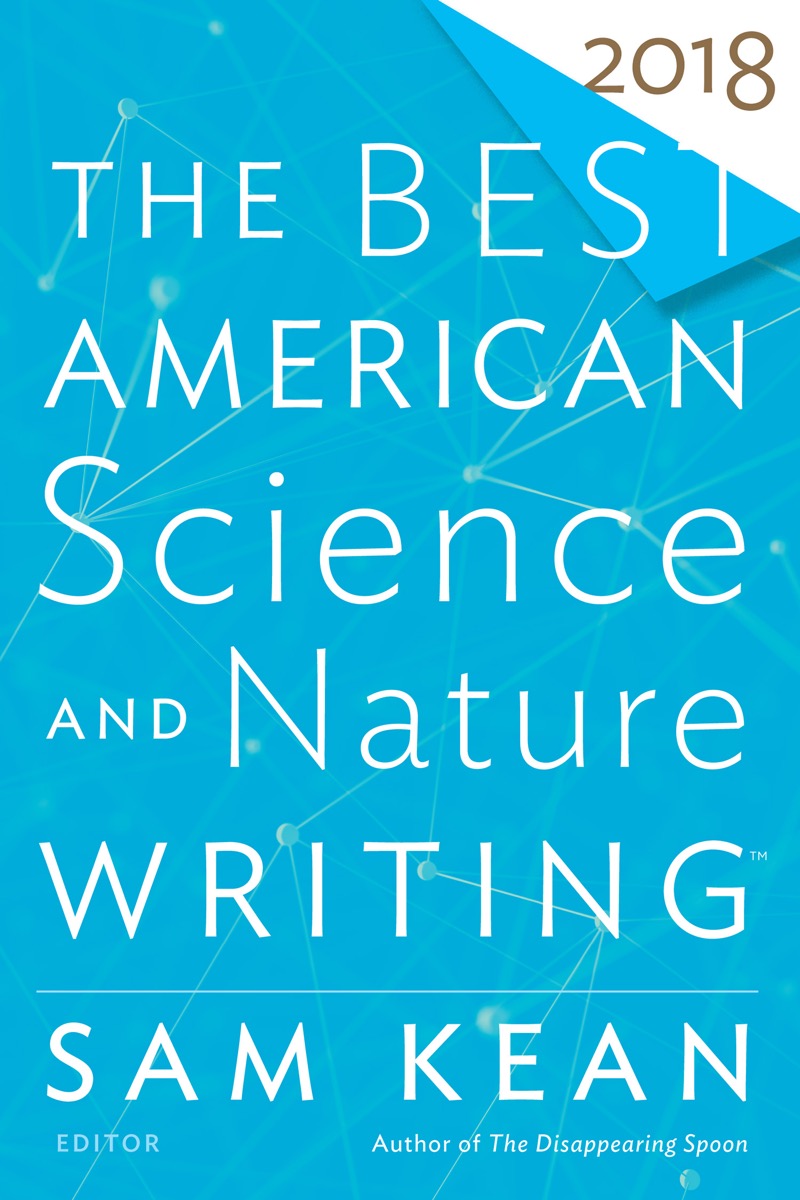 Best American Science and Nature Writing 2018 edited by Sam Kean
Best American Science and Nature Writing 2018 edited by Sam KeanThis feels like a cop-out, but I think that collections of essays are a great way to find amazing science writing and science writers. The individual essays are short, so they’re easy to read before bed or on the bus or something, and the collections are always really well written and interesting overall. This edition has one of my favorite essays of all time: “Fantastic Beasts and How to Rank Them,” by Kathryn Schulz. Which do you think is more likely to exist: Bigfoot or the Loch Ness monster? Unicorns or dragons? Why do you think that? Schulz writes beautifully about the psychology and logic behind these illogical decisions.
Associate editor for Library Journal Reviews
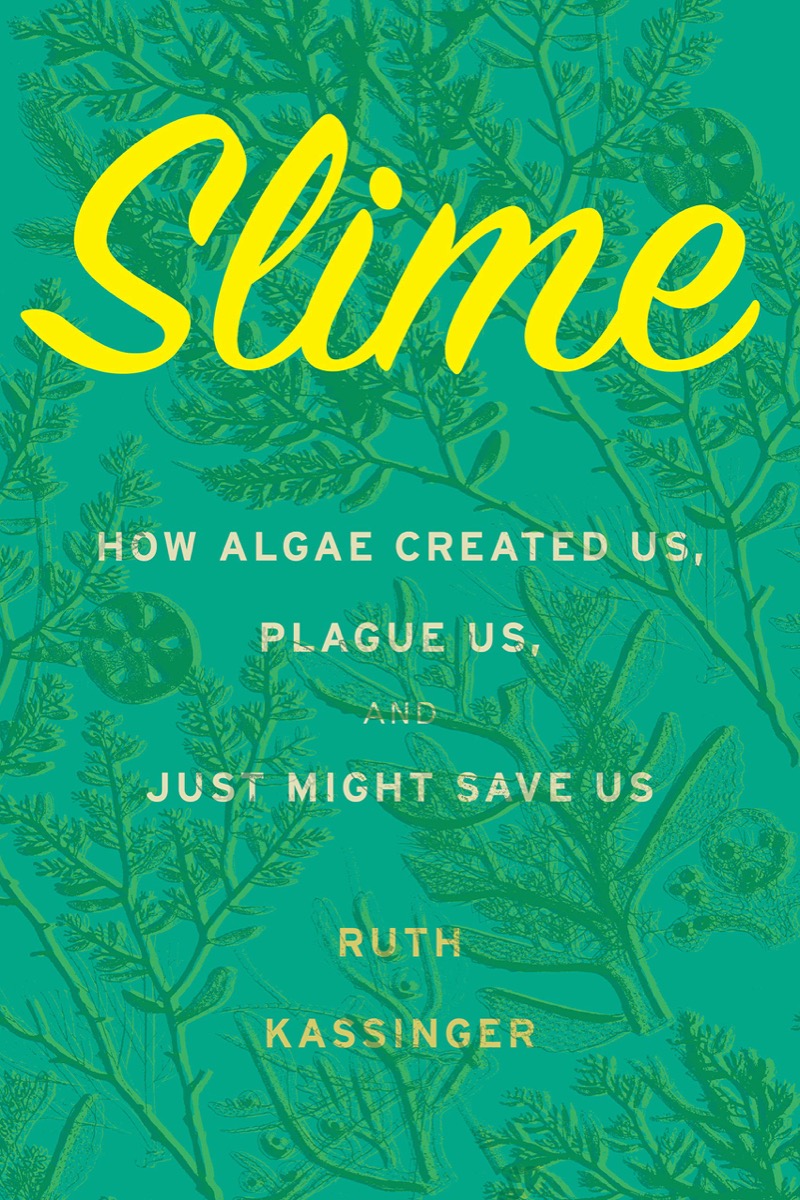 Slime: How Algae Created Us, Plague Us, and Just Might Save Us by Ruth Kassinger
Slime: How Algae Created Us, Plague Us, and Just Might Save Us by Ruth KassingerYou’d be mistaken for assuming that algae is boring—botany writer Kissinger writes an entertaining book proving that isn’t the case. Her debut takes readers from farmers working in the burgeoning seaweed industry to manufacturers who make clothing out of algae, creating an entertaining read for fans of popular science and culinary narratives.
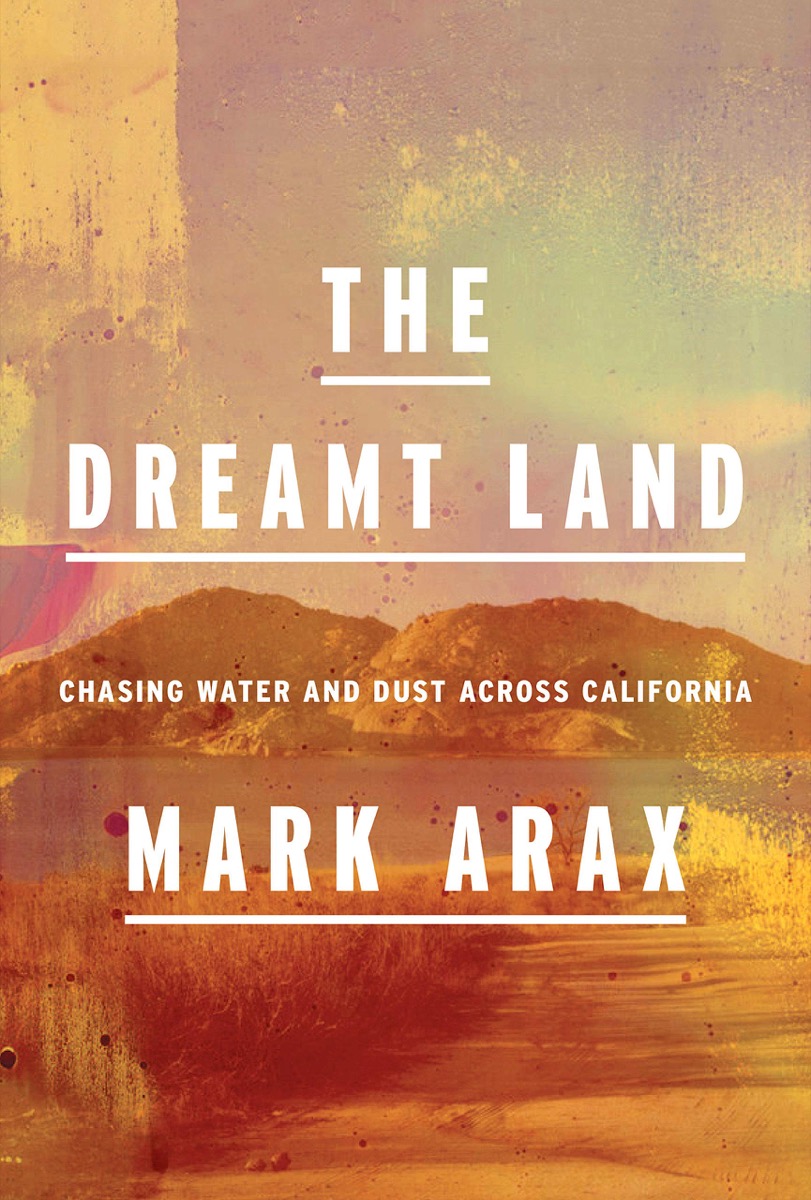 The Dreamt Land: Chasing Water and Dust Across California by Mark Arax
The Dreamt Land: Chasing Water and Dust Across California by Mark AraxPart memoir, part natural history, part love letter to his home state, this engaging work by journalist Arax details the origins of his grape grower father to how current farmers in California are dealing with water rationing and alternating periods of drought and flood. This is a long read, but worth the effort.
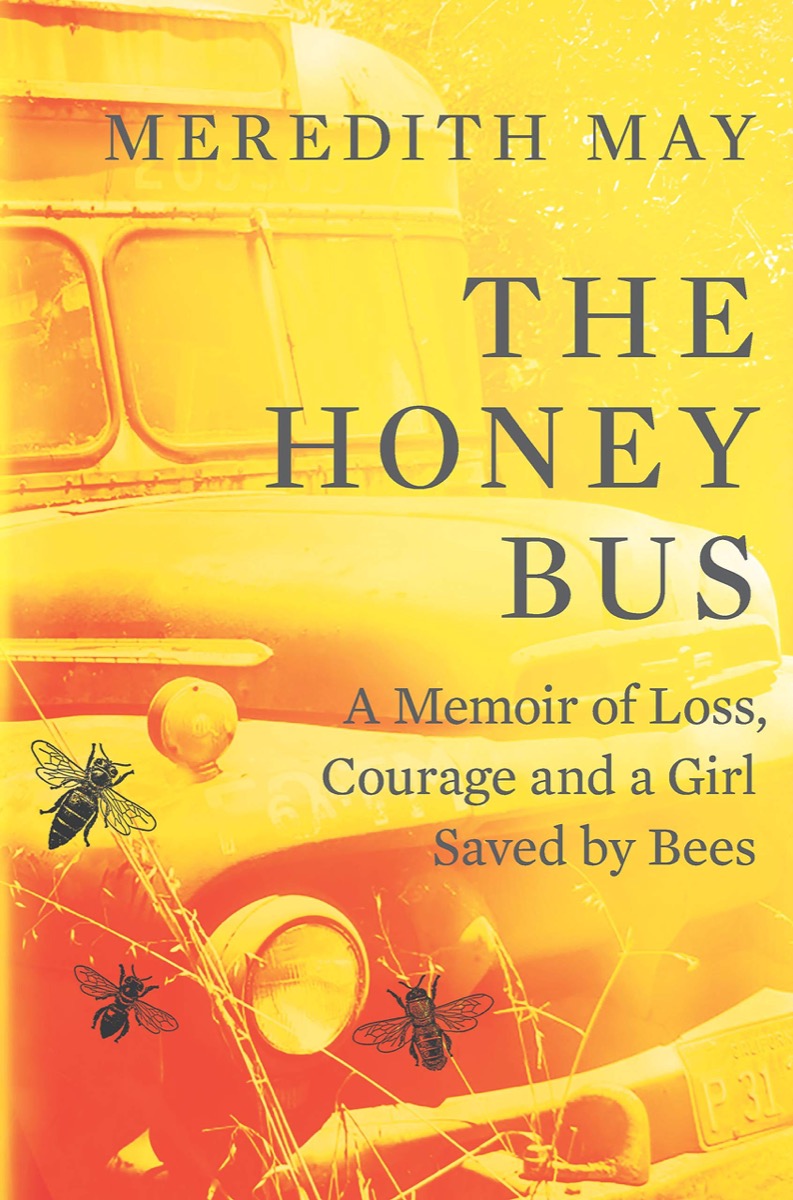 The Honey Bus: A Memoir of Loss, Courage and a Girl Saved by Bees by Meredith May
The Honey Bus: A Memoir of Loss, Courage and a Girl Saved by Bees by Meredith MayThis debut by journalist and fifth-generation beekeeper May is a captivating read, detailing how she became drawn to the order of beekeeping as a reprieve from an unstable childhood. Besides May, her beekeeper grandfather and the bees themselves are also the stars of this story; their personalities shine throughout.
Associate professor of public science and author of ‘Citizen Science: How Ordinary People Are Changing the Face of Discovery’
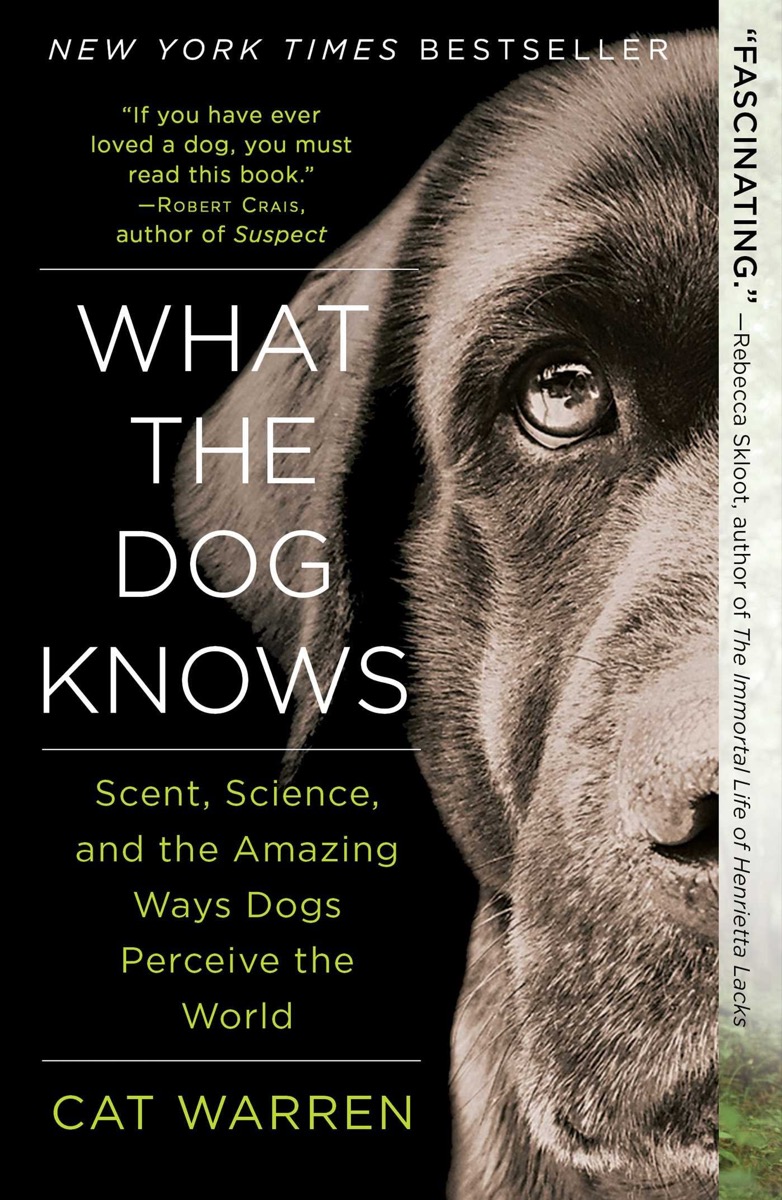 What the Dog Knows: Scent, Science, and the Amazing Ways Dogs Perceive the World by Cat Warren
What the Dog Knows: Scent, Science, and the Amazing Ways Dogs Perceive the World by Cat WarrenThis book is about a woman (the author) and her dog, Solo, that she trains to find cadavers. Woven around their journey is the fascinating science of scent, forensics, dog training, and animal behavior amidst the drama of detective work. If you enjoy it, your kids will too and the Young Readers Edition will be released this fall!
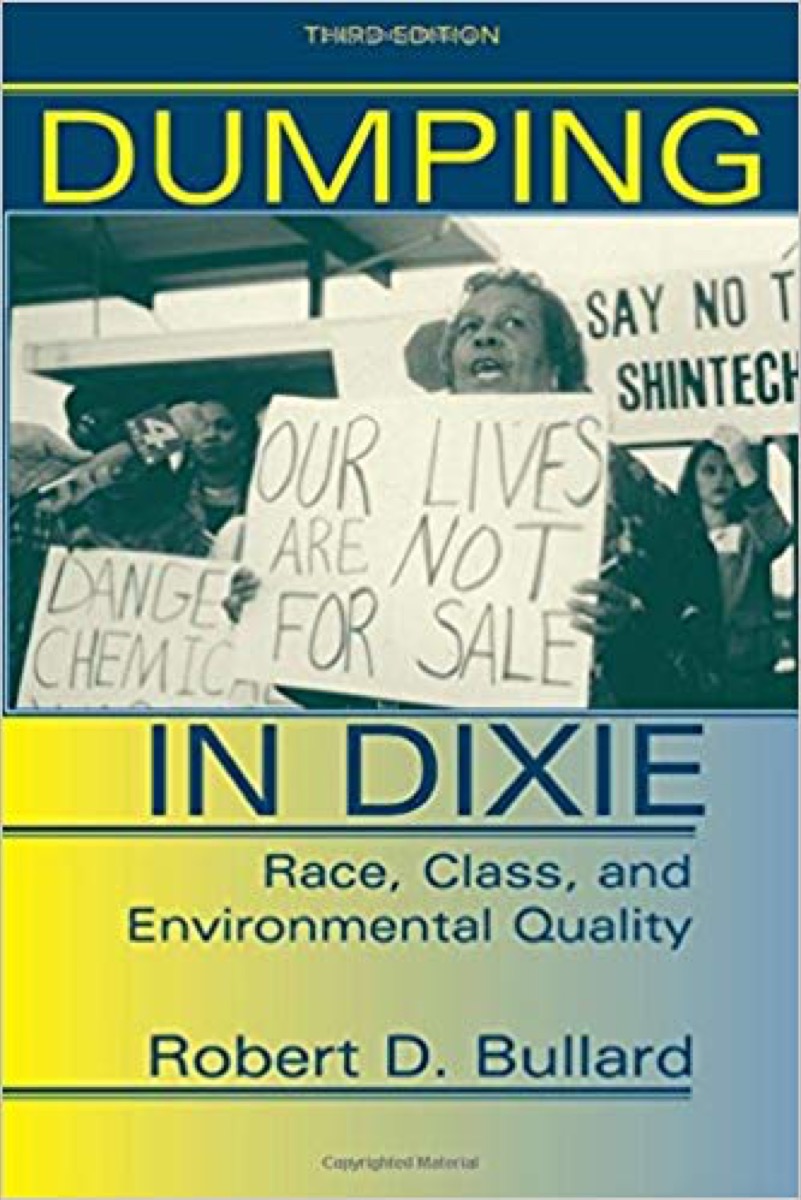
This is a partly academic text that exposes the hard reality that racism also takes the form of pollution. People of color are disproportionately burdened with environmental exposures to industrial pollution. At the intersection of the environmental and civil rights movements, Bullard carefully chronicles struggles of the poorest people in five southern towns, and, in different ways involving science, law, and community organizing, each seek environmental justice.
 The Thrilling Adventures of Lovelace and Babbage: The (Mostly) True Story of the First Computer by Sydney Padua
The Thrilling Adventures of Lovelace and Babbage: The (Mostly) True Story of the First Computer by Sydney PaduaThis graphic novel is partly a well-annotated story of Ada Lovelace and Charles Babbage as they laid the conceptual foundation for computers, and partly a series of hilarious fantasies of these two historic icons flexing their superpowers in other settings. If you enjoy the history of science and become a fan of historic figures, then you’ll enjoy this graphic novel.
Alison Gilchrist is a graduate student researcher in the Department of Molecular, Cellular & Developmental Biology at the University of Colorado Boulder in Boulder, Colorado.
Caren Cooper is an associate professor of Forestry and Environmental Resources and in the Leadership in Public Science Program at NC State University in Raleigh, North Carolina. She’s also co-author of A Field Guide To Citizen Science: How You Can Contribute to Scientific Research and Make a Difference (Timber Press, 2020).
Stephanie Sendaula is a programming and outreach specialist for LibraryLinkNJ in Lawrenceville, New Jersey.
IRA FLATOW: This is Science Friday. I’m Ira Flatow coming to you KUNC in beautiful Greeley, Colorado. Colorado is a great vacation destination if you’re a fan of hiking, camping, or river rafting, or maybe you prefer to forgo all that physical activity, get out in the sun here. It’s gorgeous. Just take a dip in one of the state’s famous hot springs.
But you say a vacation is only as good as the book you bring with you. You’re a reader, yeah. So which books do you choose? A tale of historical nonfiction? How about a graphic novel? A book of science poetry? A collection of short essays? It feels like there are so many ways to consume science writing, so many as there are fields of science.
But don’t panic. Don’t get overloaded. We’re here to help you decide. It’s our annual panel of science book lovers. The panel is here to give us their picks for summertime. You won’t be stuck reading Eat, Pray, Love again. So we’ve got other things for you to read. And you can see all the books we’re going to talk about on our website at ScienceFriday.com/summerbooks, ScienceFriday.com/summerbooks.
Allison Gilchrist is a graduate student researcher at CU, Boulder, host of the podcast “Buffs– Buff Talk Science.” I like that name. And is editor in chief of Science Buff at CU, Boulder Stem Blog, and she joins me here in the studio. Allison, welcome to Science Friday.
ALLISON GILCHRIST: Hi, great to be here.
IRA FLATOW: It’s great to have you. Karen Cooper is an associate professor of public science at NC State University in Raleigh, North Carolina. She’s also the author of the book, Citizen Science, How Ordinary People are Changing the Face of Discovery. Dr. Cooper, welcome to Science Friday.
KAREN COOPER: Thanks. Hi, I’m happy to be here.
IRA FLATOW: Nice to have you. Stephanie Sendaula is an associate editor for Library Journal Reviews, based in New York. Stephanie, welcome back.
STEPHANIE SENDAULA: Hi, Ira, thank you for having me back. I love sitting in your chair for the time being.
IRA FLATOW: Keep it warm for me.
STEPHANIE SENDAULA: I will.
IRA FLATOW: OK, Allison, so if you like to travel to different cities, you might want to know something about each of them, specifically the air pollution. What book should people read to find out about that?
ALLISON GILCHRIST: Right, yeah, so I recommended a book called Choked, by Beth Gardner, which is about air pollution in different parts of the world. Beth traveled all over the place. She went to places that you would expect to have bad air, like Delhi, and Beijing, and LA, and places that you might not expect to have bad air, like London and Warsaw. And so, this is a book about the chemistry of air pollution, where it comes from, why it’s different in different cities, and also about the politics about air pollution, and how we can mitigate it using politics.
IRA FLATOW: Well, you know, people will always ask you in your research– what’s the most surprising thing you learned about air pollution? Well, to you it was?
ALLISON GILCHRIST: To me, it was probably that the air pollution in Warsaw is terrible. And it’s a result of the people burning coal there. So I didn’t realize that coal was still a primary source of fuel in a developed country. And I didn’t realize that that could create the air that is so bad in Warsaw.
IRA FLATOW: Stephanie Sendaula, a lot of people are going to be hitting the beach this summer.
STEPHANIE SENDAULA: Yes.
IRA FLATOW: More and more, we’re seeing algae proliferating in the world’s oceans.
STEPHANIE SENDAULA: We are.
IRA FLATOW: You got a book on your list about that topic, right?
STEPHANIE SENDAULA: I do, it’s called Slime, by Ruth Cassinger. She is a gardener and botany expert. And this was just a really fun, interesting book about how algae plays a hidden role in our lives. It’s in our salad dressings, our shampoos, our lotions, even some of our shoes.
And she follows people who make a living from wild seaweed harvesting, and even from indoor algae farming, which I didn’t even know was a thing. And she talks a lot about how the climate is warming, algae is growing and multiplying, which isn’t always a good thing. And she also has recipes included for seaweed fans. So this is a really great, interesting, fun read for people who are just taking a look into science and just want to know more about what we eat and how it gets there.
IRA FLATOW: So this book does then talk about climate change.
STEPHANIE SENDAULA: It does.
IRA FLATOW: You would have to.
STEPHANIE SENDAULA: Yes.
IRA FLATOW: If you’re talking about algae. Karen, you’re known for your work with citizen science. So do you have any citizen science book recommendations on your list?
KAREN COOPER: Yeah, well I have a couple. And one is kind of to prepare people to be citizen scientists. It’s called Observe, Collect, Draw, a Visual Journal. And it’s a how-to book. So it’s one you read and then it’s when you do, rather than– it’s not really a relax in the hammock kind of read a book time. It’s more of an action book. So it’s just fun, because it’s really for people to discover and visualize patterns in their life.
Some people might get into that with their Fitbits. But this is like the old-fashioned pen and paper way. And it’s a sequel, actually, to Dear Data, which was sort of a set of postcards that two friends had exchanged to each other over the course of a year, weekly. Where they shared their lives, but they shared their lives through these visualizations of data.
So I think there was so much interest in that, that people really wanted to be able to do the same thing. And so this book is really to help people learn how to do that. So it has a lot of different activities for really like seeing your life in a whole new way.
IRA FLATOW: That’s an interesting idea. And our number, if you have an idea for a book, our number is 844-724-8255. Yeah, because making graphic– you know, graphics out of science data is really an important thing, so we can actually visualize what’s going on. We do that better than computers, right? We pick out patterns better than computers can do.
KAREN COOPER: Right, and it’s just a creative and fun thing to be able to do.
IRA FLATOW: Well, besides that. You want to put steam in there–
KAREN COOPER: OK, fine, we’re better at it too.
IRA FLATOW: Allison, if you’re the kind of person who likes creepy crawlies, we’ve got a book for you. What bug book do you have on your list?
ALLISON GILCHRIST: Yeah, well I have to admit that I don’t really like creepy crawlies. So this is the perfect book for someone like that.
IRA FLATOW: If you’re afraid of them, this book is for you.
IRA FLATOW: So this is a book called Bugged, it’s about bugs. And it’s by a Denver journalist called David McNeil. And he wrote about insects and the different niches in which they exist, but also about the people who really care about them, who study them, and collect them, and are otherwise obsessed with them. So for me, it was not so much a way to learn about bugs, although I did learn something about bugs, but also to learn about people’s weird obsessions and how they spend their time and money.
IRA FLATOW: Well, you could go on forever with–
ALLISON GILCHRIST: Oh, yeah.
IRA FLATOW: –that book, but also, you’ve got a book for some budding entomologists who want to inspect insects, Karen, right?
KAREN COOPER: Oh, that’s right. Yeah, so–
IRA FLATOW: And you concentrate starting inside your house.
KAREN COOPER: Right, so Never Home Alone by Rob Dunn is a book about a whole bunch of research that his lab has done with citizen scientists, with people sharing their observations. And it’s really just like a marvel of the amount of arthropods, microbes, fungi, all the things that dwell in our homes. And then there is also a citizen science project by that same name, Never Home Alone, in which every reader, any person, really, can photograph and report all the little tiny creatures that they find living in their homes.
IRA FLATOW: Yeah, and we have a Facebook group. And on our Facebook group, Jasmine Antonio says that she recommends The Secret Life of Flies by Erika McCallister. And we did a Sci Friday segment on this book. And I was blown away by– I had no idea there were more than house flies. How many more there were, I had no idea. You agree with that, Karen?
KAREN COOPER: Right, that’s what surprised me too, is just how much diversity there is, even just right around us. And you can either start to have your skin crawler, or you can just really get into it, and just appreciate that amount of biodiversity.
IRA FLATOW: Mm-hmm. And now, let me throw in one of the books I really have been reading and I enjoy. I’ve noticed beekeeping is becoming very popular with people. And we recently had Tom Seeley, I guess the beekeepers’ beekeeper , on to talk about his book, The Lives of Bees. So that would be really on my summer book recommendation list, for all aspiring beekeepers out there. And then we have this Stephanie bee book.
STEPHANIE SENDAULA: Yes we do. I also loved the Honey Buzz by Meredith Mae. And she is a fifth generation beekeeper. And in her memoir, she talks about how she found her way into beekeeping as kind of a refuge from an unstable childhood. Her grandfather took her in and he was a beekeeper. And she just found order and stability in watching the bees, learning their language. And she just had this really great vivid recollections of visiting the apiary in Big Sur. And just like becoming– just falling in love with bees. And just sharing her love of them with everyone else. And this is just also a great read for anyone who’s interested in memoirs or just bees in general. So, really interesting.
IRA FLATOW: Staying with our nature theme, let’s go to the phones. Let’s go to Tampa, Florida. And [INAUDIBLE] Kali, is that correct?
AUDIENCE: Yes, that is, that’s pretty correct. Yeah, that’s good enough.
IRA FLATOW: Yeah, I get the same with my name, so I know how it is. I’m sorry about that, go ahead.
AUDIENCE: No problem. My summer book recommendation would be a book called Silent Spring by Rachel Carson. And the first time I read the book, it was so– it spoke to me so much, because I pictured myself in a time when the book was written, when the environmental effects of things like pesticides weren’t really widely known.
And just reading the book, you could see what Rachel Carson was able to do, because she was able to show people what the effects of things like pesticides did to the environment. And I thought a book like that serves the purpose of just what an educational book should be. It should be something that educates people. But also, that’s something that’s a great read, and it can be even like 50 or 60 years later, in our time as well.
IRA FLATOW: Allison you’re shaking– you’re nodding your head about this. You’re young, you’re a student. It was written way before you were born. Do you agree that this is something, that’s something even modern, young people should be reading now?
ALLISON GILCHRIST: Oh, yeah, I think it really changed the game for science writers, because they could– they saw that they could make a huge difference. And I think there’s still a lot of– there’s a long way to go, in terms of changing the world around you for the better, in terms of fixing the environment. But that was a good– a great first step forward.
KAREN COOPER: Yeah, can I chime in on that too?
IRA FLATOW: Sure, absolutely.
KAREN COOPER: Yeah, so Silent Spring directly motivated the initiation of two citizen science projects that still continue, that really, actually, also helped people find their paths to making a difference in helping conservation. And these were– my field is ornithology. These were bird projects– the breeding bird survey and nest record cards.
IRA FLATOW: We had a lot of– we asked people to tweet in during the week what their favorite books were. We had so many answers. Let me see if I can get through a few of them. Karen says I’m halfway through The Map that Changed the World, by Simon Winchester, a great book about the first geological map of England. From Camilla, she says, Naomi Klein’s This Changes Everything. This book covers at all, climate science, economic, climate change, politics, environmental policies. Yet, she gives us hope.
So thinking about Rachel Carson, about these books, people are still talking about environmental books. They are, still, more than ever, perhaps, would you not think, Karen, Stephanie?
KAREN COOPER: Yes, I completely agree.
IRA FLATOW: One of my favorite categories of summer books is animal science books. And they’re just great for summer. Do you have any recommendations, Karen or Stephanie?
STEPHANIE SENDAULA: I do, if I can just chime in.
IRA FLATOW: Sure.
STEPHANIE SENDAULA: I really liked Eager by Ben Goldfarb. He’s an environmental journalist. And I tell people, you might not think you’re interested in beavers, but after reading this book, you definitely will be. He talks about how their numbers declined during the fur trade in the 1800s and they’ve since come back up. And there’s this whole career of people, who if you found a beaver in your house or backyard, you can call relocation expert, and they can help relocate that beaver elsewhere, which is a really fascinating career. And how they’re being reintroduced in Scotland after being extinct. This is a really fun, quirky read. There’s lots of great people, scientists, journalists, engineers whose work revolves around beavers. And I would just recommend that as a really great summer read.
IRA FLATOW: I’m Ira Flatow. This is Science Friday from WNYC Studios. I’m sorry, I usually walk on people’s lines. Go ahead, I didn’t mean to.
KAREN COOPER: I have an animal book I was going to–
IRA FLATOW: Sure.
KAREN COOPER: –that I recommend, which is called What the Dog Knows, by Cat Warren. So what does the dog know, you ask?
IRA FLATOW: What does the dog know I’m asking.
KAREN COOPER: The dog knows–
IRA FLATOW: I can play straight man, go ahead.
KAREN COOPER: –how to sniff out cadavers.
IRA FLATOW: Is that a pun, the dog knows– or is that just a bad joke? Sorry.
KAREN COOPER: And, yeah, it is, it’s all about their noses. This story is about a woman who’s actually an English professor at NC State. But her hobby is training her dog to find missing persons. And in telling that journey of how she is trained to train her dog– so that people are trained as well as the dog– she weaves in a lot of science about scent, about these amazing abilities that dogs have.
And because of this topic, there’s a lot of detective work. And I actually just really like mysteries. So I really like when science nonfiction involves mysteries, or else I’m just morbid. But what’s exciting too is that the young adult readers version is coming out I think sometime the next few months.
IRA FLATOW: Those animal science books seem to be very interesting among everybody. And one of my favorite genres of books, I like books about the history of science. You too, Allison, you like history of science books?
ALLISON GILCHRIST: My list shows that.
IRA FLATOW: They’re just fascinating. We have one coming up I’m reading now, that we’ll be talking about in the next week or two. But tell us what– you say you’re fascinated. Give us a pick or two of your history of science books.
ALLISON GILCHRIST: Yeah, well, I really wanted to talk about Poison Squad by Deborah Blum.
IRA FLATOW: Deborah Blum.
ALLISON GILCHRIST: Yeah, so I know she was on last year’s program. But I really loved her other book, The Poisoner’s Dilemna, or Handbook, sorry, which is also pretty morbid.
IRA FLATOW: She’s into poisons a lot these days.
ALLISON GILCHRIST: So I knew picking up Poison Squad was going to be really interesting and well-written. But it’s a book about how the FDA came to be. And she talks about in the book how we’ve romanticized historical foods a little bit. And the word old-fashioned is a little bit synonymous with untainted. But in actuality, historical foods are pretty gross.
And one great example is that they used to– dairy companies used to put formaldehyde in milk to keep it fresh for longer. And in fact, it turned it a little bit sweet. So people didn’t mind it so much. But, obviously, that’s pretty gross. And there are a bunch of other examples of gross chemicals added to foods to preserve them or to color them. And it was only because of a group of activists, and chemists, and politicians complaining about this, and trying to enact some legislation, that that got changed.
IRA FLATOW: Any other book in that genre?
ALLISON GILCHRIST: So Radium Girls.
IRA FLATOW: Radium Girls.
ALLISON GILCHRIST: Yeah, that’s a great book. It’s about the women who worked in radium– at the radium corporation painting watch faces.
IRA FLATOW: With no idea what the consequent were.
ALLISON GILCHRIST: No, no idea. Yeah, and the company had an idea, which is the worst part, is the company knew long before the women who were working with radium that radium could be very dangerous. And they just ignored it and pushed it off. And these poor women, just their bones crumbled away. Because they were ingesting radium. And it was killing them from the inside. So it’s a really, really horrible story.
IRA FLATOW: Sad story, but true. We have to take a break and we’re going to come back and talk lots more about books, your favorite books. We’ve got all kinds of folks on the line that want to talk about it. And if you’d like to join, we’d be very happy to have you join us. So we’re going to take a break. We’ll be right back. Stay with us. Don’t go away.
Hi, I’m Ira Flatow. This is Science Friday. We’re talking about summer reading, the books people are suggesting that you might want to take along with you on going to the beach, out to the mountains, hiking, whatever. And we’re talking about with our readers, Allison Gilchrist, Karen Cooper, Stephanie Sendaula. And if you’d like to join us, we’d be happy to have you. We have a lot of folks who are asking questions, 844-724-8255. Allison, anything on your list for people who don’t normally enjoy reading science books?
ALLISON GILCHRIST: Well, they could read some fiction if they wanted to.
IRA FLATOW: Go for it.
ALLISON GILCHRIST: So I recommended a book called The Immortalists by Chloe Benjamin. And this is fiction. But it does include the scientist, the story of a scientist. So this is a book about four kids who meet a fortune teller when they’re quite young. And the fortune teller predicts the day that they’re going to die. She can’t tell them how or why, but she tells them the exact day. And so the rest of the book is them dealing with their own mortality
IRA FLATOW: Wow
ALLISON GILCHRIST: Yeah.
IRA FLATOW: Hard thing to know, the day you’re going to die.
ALLISON GILCHRIST: Yes, well some of them don’t believe it. So it’s also a story about whether or not they believe in the supernatural. But the last story is about one of the kids, who becomes a scientist. And she studies aging. And so that section of the book meant a lot to me, because she felt like someone that I would run into in the hallway, as soon as she feels like a real scientist, and she talks about her science in the same way that many of me and my friends do. So it was very– it was, I think, a good way to get a sense of why scientists do what they do, and what they’re interested in.
IRA FLATOW: Karen, what about your list? Anything that’s not the standard non-fiction science story?
KAREN COOPER: Yeah, I guess I have a few. Let’s see– a graphic novel and a book of poetry. Let’s see–
IRA FLATOW: Can you read a poem for us?
KAREN COOPER: I don’t know that I could do it justice.
IRA FLATOW: I butcher poems all the time. So if you’ve got one, we’ll give you some time to do that. I’ll give you my pick for one of my favorite books. One of my favorite books– I recommended it last year too– is Einstein and the Quantum by a Douglas Stone. It’s my top pick of this year’s summer books, because, of course, it is the 100th anniversary of the solar eclipse that made Einstein famous.
And you know, we hear about all these famous scientists, but what Doug Stone does in this book is he makes a community out of them. So you see how they’ve all around the world interacted with each other. So it’s a very personality heavy book with very little of equations and stuff in it. And it gives you an idea of what the period of life was like 100, 120 years ago in science. And what was going on, and made the theory of relativity and quantum so important. So, Karen, have I filled up enough air for you?
STEPHANIE SENDAULA: No pressure.
KAREN COOPER: Yeah, I’m just trying to pick here. But I’ll say, the book that I recommended of poetry, science inspired poetry, is called Radial Cemetery by Catherine Larson. And yeah, I am not typically a person who like reads a lot of poetry. So for me, and maybe for people like me, who don’t read a lot of poetry, I think this is a really good way, if you like science, to start enjoying poetry.
And I’m curious if it– it might also be good for people who aren’t into science, but like poetry, to start getting into science. But the poems are– like we often talk about what it means to think like a scientist, but these are definitely about like what it is like to feel, I guess, like a– like to feel the curiosity, to feel the challenges, and the frustrations, the fun. It’s not about communicating scientific knowledge, or facts, or methods, or anything. It’s really sensory driven.
I’m still trying to decide what to read here. They’re not particularly short, so I’m thinking just a–
IRA FLATOW: Just read, yeah, a couple of sentences, a couple of lines, one stanza, one paragraph.
KAREN COOPER: Yeah, so, Cripsis, for the way that things are hidden. How certain small truths disappear against a larger truth. The way my Cajun friend explains bouillabaisse as the synthesis of red snapper, and crab, oyster, mussels, and crawfish, garlic, and orange peel, dry white wine. The fusion of the senses. So autumn slips into the swamp lands with glossy alligator eyes. It goes on from there.
IRA FLATOW: That’s nice. Yeah. You get that feeling it is evocative of a feeling.
STEPHANIE SENDAULA: Yeah, that’s lovely.
IRA FLATOW: Yeah, you like that?
STEPHANIE SENDAULA: Yeah.
IRA FLATOW: Yeah, let’s go to phones, because I’m sure a lot of people have a lot of suggestions we haven’t gotten to. And gosh, we have filled up. Let’s go to– let’s go to San Francisco. Hi, Alan, welcome to Science Friday.
AUDIENCE: Hey.
IRA FLATOW: Hey, there.
AUDIENCE: Glad to be there. You’ll be happy to know that it’s about 54 degrees here. And the heat wave is over. I’m at home with a sweater on. My book is Tides, the Science and Spirit of the Ocean, by Jonathan White. And I am an ocean geek. And I thought I knew everything there was to know about the tides. But this book is really incredible. And it’s so informative and well-written.
IRA FLATOW: That’s great to hear. I’m an ocean geek too. And you know, the physics of the tides is really hard to understand.
AUDIENCE: It is.
IRA FLATOW: The interaction of the moon, and the Earth, and gravity, it’s not as simple as we think it is.
AUDIENCE: No, not at all. And you know, it’s like, I’m used to having two times a day, and one being larger than the other. And that’s not true everywhere. A lot of places have no tides. Then there are places, like the Bay of Fundy, that has huge tides. He also goes into tides as a way of generating electricity maybe in the future. And so, it’s a really fascinating, well-written book.
IRA FLATOW: That is a great book. Thank you, because I love the ocean myself. And Allison, what do you think? Allison, Karen, Stephanie, what do you think? A book about–
STEPHANIE SENDAULA: I was actually thinking– I know he was based in California too. My next book was tying into California also. If I could talk about that really briefly.
IRA FLATOW: Sure, go ahead.
STEPHANIE SENDAULA: Yeah, the Dreamt Lands by journalist Mark Arax. And this is like part memoir, part California history, part kind of love letter to his home state of California. And he talks about his dad, who grew up on a raisin farm and was a raisin farmer. And of friends, and of family, who work on almond and pistachio farms. And just the alternating periods of flood and drought, and how they’ve affected California throughout the centuries even. So this is just a really interesting– it’s really long, so it is really lengthy. I don’t know if it’s really a beach read, but it’s a really fascinating read. Maybe like hiking, or on an airplane, or a long flight, or anything. The lengths that people go to get water to keep their farms in existence. So it’s really interesting.
IRA FLATOW: Very interesting. A tweet from Abigail Major, who says, I love when someone takes an object and analyzes the role it plays in history or culture. So the book The World in a Grain, the Story of Sand, and how it transformed civilization is on my reading list this summer. I am fascinated by sand also. And things that we think of sand, like the White Cliffs of Dover really are diatoms, they were once all living things, the sand. That’s just me.
STEPHANIE SENDAULA: Yeah, it’s interesting to think about.
IRA FLATOW: And Allison, how about for people who don’t have the time to get through a whole book?
ALLISON GILCHRIST: Right, yeah, so I put on my list the Best Science in Nature Writing of 2018. And this year’s edition was edited by Sam Keane. So this felt like a little bit of a cop out, because I’ve allowed Sam Keane to do all the hard work of finding the best science and nature writing and then just put it my own list. But it is, I think essays that are a really great way to get introduced to science writing. Because if you don’t want to commit to an entire book about a topic you’re not sure you’re going to be super interested in, this is a great way to get a taste of a lot of different topics.
IRA FLATOW: It’s like a short story.
ALLISON GILCHRIST: Yeah, exactly.
IRA FLATOW: If you don’t want to read the whole book, you read Edgar Allen Poe or something–
ALLISON GILCHRIST: Yeah, exactly.
IRA FLATOW: A short story, yeah. Do you have a favorite on your list?
ALLISON GILCHRIST: Yeah, I’m so glad you asked. Because one of my favorite essays of all time is in this particular edition. It’s called Fantastic Beasts and How to Rank Them by Catherine Schulz. And it’s about impossible creatures and how likely they are. So, for example, do you think that Bigfoot is more likely to exist than dragons? And why do we think that? So my lab has a running joke that Bigfoot probably does exist. And that is based on the fact that he is very similar to a lot of the creatures that exist in real life, unlike dragons, which don’t have a analog in the real world.
IRA FLATOW: Jane Goodall would agree with you.
ALLISON GILCHRIST: Yeah.
IRA FLATOW: She believes in Bigfoot.
ALLISON GILCHRIST: Really? I didn’t know that.
IRA FLATOW: She’s been on– many years ago, she was on our show and shocked everybody. We had a couple of minutes left, and she said, oh, yeah, I think it’s real.
ALLISON GILCHRIST: Wow, I didn’t know that.
IRA FLATOW: She came on– and all the years, she’s been coming on, she’s been talking about it. Let’s go to the phones. Let’s go to Oliver in Denver. Hi, Oliver.
AUDIENCE: Hi there.
IRA FLATOW: Hi there.
AUDIENCE: Happy Flag Day.
IRA FLATOW: Thank you.
AUDIENCE: I wanted to recommend a book called Emergence. It’s the connected lives of ants, brains, cities, and software by Steven Johnson.
IRA FLATOW: Wow, that would be a connection, would it not?
AUDIENCE: It’s a great book. The study of emergence is the science of how non-hierarchical systems organize themselves. And it’s kind of a paradigm shifting book that talks– it’s scientific, but it has a lot of implications outside of just science, in terms of politics and just human organization and stuff. It’s a really fascinating read. I recommend it.
IRA FLATOW: Yeah, it’s like big data, you know, if you think of ants and whatever. They all have some way that they predictably work.
AUDIENCE: Exactly. And it’s a really fascinating field, because there’s not a whole lot of research on it. It’s pretty new, but it’s really, really exciting to read about.
IRA FLATOW: Easy to read?
AUDIENCE: It’s a little bit dense, but it’s fun to read, because it just has so much implications for other fields.
IRA FLATOW: Yeah, fun is good. Thank you.
AUDIENCE: Yeah, thank you.
IRA FLATOW: You’re welcome. Yeah, we’re starting to tie in all these different things, Allison, what do you think? Do you have a lot of interesting things to make analogies of?
ALLISON GILCHRIST: Oh, yeah, it’s great to see how all of these books can connect to each other. I just generated a list based on what I’d read, but now I’m seeing all the books that I want to read from you guys.
STEPHANIE SENDAULA: I am too.
IRA FLATOW: One of the favorite vacations I’ve taken a couple of times, out to Southern Utah. I’ve done the east and the west sides of all those– Grand Staircase, Escalante, beautiful national parks. And it’s also where paleontologists head in the summer to dig up dinosaur bones. And one of my summer science book recommendations– if you like the history of dinosaurs, is The Rise and Fall of the Dinosaurs by Steve Brussate. Just a– he’s a young scientist. And he writes so well. And he goes around the world finding other scientists, and talking about how science is really done and the joy of discovery. Stephanie, I want to follow up with you, with Skeleton Keys.
STEPHANIE SENDAULA: Yeah, and I really like that book too. I know we talked about it last year, when I was on, The Rise and Fall of Dinosaurs. Oh, yeah, and Skeleton Keys by Brian Switec. I know he was on the show recently. And he was great then. And this is just a really fun book. I’d actually give it to someone who isn’t really interested in science, because there’s so much fun trivia in here, about our bones, like how they have their own character, and they’re just really dynamic and flexible, more so than we would think.
And just, I really liked the part at the end, about bone collecting, and how it’s kind of a status symbol now, and the ethics of that, and selling bones on like Instagram and Pinterest, which I’m like always on. So I was just like really fascinated by that part specifically. So this is just a really interesting book overall.
IRA FLATOW: I’m Ira Flatow. This is Science Friday from WNYC Studios at the studios of KUNC in Greeley, Colorado, talking about books. Oh, let me– as we wind down, got a few more minutes to go, anything, any book that– let me start with you, Allison, that we shouldn’t live without? A book that’s a great read, that may not even be on your summer book list or anything– what book?
ALLISON GILCHRIST: Right, I really enjoyed Ed Young’s book about microbes, I Contain Multitudes. So that’s not on my list, because it’s fairly old, and I know you have talked about it before.
IRA FLATOW: Yeah.
ALLISON GILCHRIST: I think that and that that is a really good example of science writing.
IRA FLATOW: There’s no reason why you can’t read the classic books.
ALLISON GILCHRIST: Yeah, for sure. That and Rachel Carson, and you’ve got it going.
IRA FLATOW: Karen, what’s your must-read of all time books?
KAREN COOPER: That’s really a tough one. But I– well, so, this is a heavy book. And it’s partly heavy because it’s a little bit academic. So I hope it can count. But it’s also heavy because of the topic, which is environmental racism. So kind of the way Rachel Carson’s Silent Spring set in motion the environmental movement, this book, Dumping in Dixie, by Robert Bullard, set, or really helped spur the environmental justice movement, which is sort of the intersection of the environmental movement with the Civil Rights Movement.
But it is a tough read, but it’s– and a depressing read, I guess in some ways, or in many ways, that it really is– he’s just shining a light on examples in several cities, about the racial and economic disparities in environmental quality. And I think the book was first published in the early 1990s.
And so, there’s some things that have changed since then, but for the most part, things really, I guess, in many ways haven’t changed. I think it’s a must just for people interested in environmentalism, because it’s a whole different way to look at race, and environmentalism, and who environmental leaders are. And it made me think differently about what it takes to have a sustainable planet, which really does involve social justice.
ALLISON GILCHRIST: I need to read that one too.
IRA FLATOW: That’s a heavy book. Stephanie, do you have any?
STEPHANIE SENDAULA: Oh, yeah, I also really love The Truth About Animals, by zoologists Lucy Clark– Lucy Cook, sorry about that. And I really liked this, because she dedicates like one chapter each about myths and misconceptions about animals that we kind of think are creepy crawly, or just like kind of like, you know, we like shutter a little bit.
So there’s like bats, frogs, hippos, schloss. And this is really a fun, popular science, and just talking about how they’re misunderstood and just really fun things that we should know about them. I think it’s great for adults and teens. And just like a really good– that’s a really good beach read, more so than the Dreamt Lands a little bit.
IRA FLATOW: Yeah, and there are– I can’t think of them off the top of my head, maybe you can, there are some really good graphic novels out there about science.
ALLISON GILCHRIST: Well, I have one on my list.
IRA FLATOW: Yeah, go ahead.
ALLISON GILCHRIST: Which is The Thrilling Adventures of Lovelace and Babbage. So that’s Ada Lovelace and Charles Babbage. And it’s– so they were sort of laying the groundwork for computers, back in the day, and hoped to make this analytical engine that would use punch cards for programming. And anyway, so it tells their story. And does have a lot of primary, especially letters and whatnot, that it draws on and references.
But then I think because they never made that machine, the author, I guess, starts to go into fiction, and then takes the graphic novel into just like– she just has so much enthusiasm for these two characters, that takes them and plops them down into other stories. And it’s really hilarious. And it’s– I mean it’s super interesting about the science that goes into computing, but anyway, it’s pretty fun, like Lovelace in Wonderland.
IRA FLATOW: You’ve got the last word today, Allison Gilchrist, graduate student researcher at CU, Boulder. Karen Cooper, of NC State, and Stephanie Sendaula, associate editor for Library Journal Reviews. Thank you all for taking time to be with us today.
ALLISON GILCHRIST: Thank you.
KAREN COOPER: Thank you.
IRA FLATOW: And you can see all of the books we talked about on our website at ScienceFriday.com/summerbooks.
Copyright © 2019 Science Friday Initiative. All rights reserved. Science Friday transcripts are produced on a tight deadline by 3Play Media. Fidelity to the original aired/published audio or video file might vary, and text might be updated or amended in the future. For the authoritative record of Science Friday’s programming, please visit the original aired/published recording. For terms of use and more information, visit our policies pages at http://www.sciencefriday.com/about/policies/
Katie Feather is a former SciFri producer and the proud mother of two cats, Charleigh and Sadie.
Johanna Mayer is a podcast producer and hosted Science Diction from Science Friday. When she’s not working, she’s probably baking a fruit pie. Cherry’s her specialty, but she whips up a mean rhubarb streusel as well.
Ira Flatow is the founder and host of Science Friday. His green thumb has revived many an office plant at death’s door.